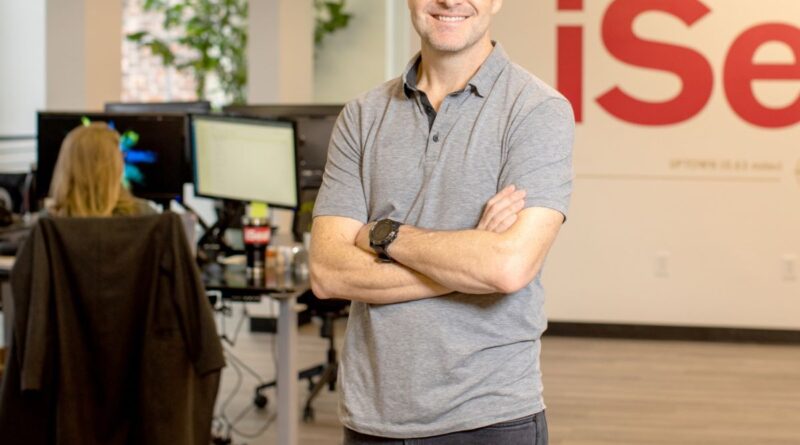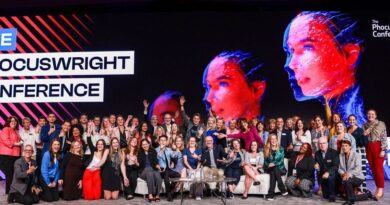CEO Spotlight – Kenneth Purcell of iSeatz
[ad_1]
Kenneth Purcell, Founder and CEO
Kenneth Purcell founded iSeatz to automate the restaurant
reservation process for hotel guests, and it has since expanded to connect hospitality, airline and financial services brands with a wide range of ancillary booking products.
Based in New Orleans, iSeatz
provides digital commerce and loyalty tech solutions to partners that include American Express, Wyndham
Hotels, Expedia and IHG Hotels & Resorts.
This conversation has been edited for brevity.
website
http://www.iseatz.com/
iSeatz launched its first ancillary management system (AMS) in 2018. How has this product and ancillary management generally evolved?
Prior to the pandemic, AMS was really meant as a way for hospitality brands to drive additional revenue from transactions through their commerce platforms, as well as offer their members relevant third-party add-ons that the brands were not able to offer without connecting to a marketplace like what we provided.
Since the beginning of the pandemic, hospitality brands have been laser-focused on getting heads in beds. And so the emphasis of late has been, “How do we keep our operators – our franchisees – happy?” And so there’s less emphasis on offering a not-onsite or not-on-property amenity than there was prior to that except that now AMS is really being used as a way to keep members engaged when we’re not traveling. And so I’d say the use case pivoted from creating revenue to more of an engagement play since the pandemic.
How are younger generations – millennials and Gen Z – impacting the design of loyalty programs?
First, you have to understand what is important to younger generations. We’ve got a bunch of data on this. Ninety-one percent of millennials and Gen Zers [say] a brand emphasizing what they’re practicing in terms of sustainability is important to them. And so I’d say that’s a markedly different approach than the discounts or the upgrades that the older generations would appreciate.
So what’s the opportunity for sustainability?
I have a statistically significant number of children for a sample size. And I asked my sons today – who are into fish, and they go to Petco a lot, and Petco’s loyalty program is a discount – I said, “What’s more important to you every time you go to Petco for a new product: Would you rather get a discount at Petco, or would you rather have Petco remove 100 pounds of plastic from the ocean?” And their initial reaction was, “Remove the plastic.”
Subscribe to our newsletter below
And so I think there’s a real gap between the sustainability initiatives that are occurring … versus the consumers’ desire. There’s this great stat: 90% of loyalty providers think that they’re delivering what their consumers need, but only 52% of consumers think the loyalty programs are delivering what they want. …
I’m almost 50. We grew up in a world where climate change kind of came around to us as a reality. These kids are growing up in a world where climate change is front and center on everything they see and everything they do. I think we have to do a better job as loyalty providers and brands to really show impact for this younger generation.
What are your thoughts on the relationship between revenue management and loyalty strategies?
No revenue management strategy is complete without the ability to identify who your most loyal and repeat customers are. … From there, once you identify who your known customers are … your loyalty program can be honed down to get the behavior that you want from that consumer long term.
I think a lot of loyalty programs right now are focused on discounts, and that is a very old concept. You stay X number of nights, you get a new night. Fly this many miles, you get access to this upgrade. It’s effectively a discount because you can buy those things off the shelf.
There’s a reason that only half of the people who are part of loyalty programs go to that loyalty program first for a redemption option. They just wind up there as an aftereffect. What the consumer wants and how the loyalty programs are geared doesn’t seem to be aligned at this point.
But it all starts with understanding who your customer is and then understanding what is your business objective. [What are you] trying to get from that customer long term? … If you don’t know [your objective], you can’t drive your revenue management strategy to target them because you’re just competing with every other brand on price.
What still needs to be fixed when it comes to technology to help drive loyalty?
There are competing owners in these very large organizations between marketing, loyalty program ownership and revenue management and potentially customer relationship management. And they’re usually in disparate systems where these things are managed. So there needs to be a centralization or at least clear connectivity among consumer relationship management, your merchandise and your retailing strategy, which is handled by marketing, your product life cycle and your pricing.
You need to understand … who you’re targeting and what behavior you’re trying to get from them and how sustainable is that. Otherwise it’s a discount program. And I think we’re still stuck in that discount world.
What is the biggest challenge or frustration you hear from your clients?
Lack of system integration – from the top of the market to the smaller opportunities. Also disparate systems are owned by multiple stakeholders, except in very small organizations. So clearly there’s an opportunity there.
And the other thing is … [loyalty program] technology is very old. … There are significant technical hurdles to integrate, and it’s a big challenge because you’re dealing with large enterprises and these are major systems and they’re older.
What are the greatest challenges currently facing the company?
The greatest challenge I see is the cycle of continuous [economic] uncertainty in terms of our ability to really plan what’s going to happen over the next 12 months.
And what is your strategy for growth?
Our strategy for growth is going to continue to be focused on winning organic growth opportunities, as well as hopefully potentially some inorganic growth opportunities as we look to expand outside of the U.S. And from a technology perspective, to be able to offer a more turnkey vision.
I think just continue doing what we’re doing right now. We’ve got a lot on our plate, and the business has grown tremendously over the last few years since the beginning of the pandemic. We’re excited about our future.
Have you experimented with ChatGPT? What impact do you think it could have on iSeatz and the industry more broadly?
I love it. It’s a much more natural way to search than picking your origination and destination markets, your dates, how many adults in your party. The way we have searched for travel has been the same since online travel [was] invented.
[ChatGPT] completely changes the way one searches for travel and one concocts an itinerary that’s in a human, readable away. The way we’re doing it right now is like travel-agent speak for people, and it’s very confusing, as opposed to being able to type into a box: “I want to go to Chicago. When should I go? And what should I do? And how much is it going to cost?”
It changes the way travel, search and itineraries are built, but I don’t foresee it connecting to all the various and disparate systems that are out there to enable bookings without going through the same effort of connecting to everything else – all these systems that we all have to do to really make that travel booking and ticketing process actually work.
So I think it changes the front end of travel – the search process – for consumers. I don’t think it changes the middleware and the back ends.
If you could flip a switch and change something immediately at iSeatz, what would it be?
We’d have a brand spanking new AI-powered user experience. Tomorrow. That was productized.
If you could go back and talk to your 24-year-old self in 1999 as you were launching iSeatz, what would you want to tell him?
As an entrepreneur, there’s a significant learning curve – and I don’t really know how to fix it – that you go through when you transform from a founder to an operator. And the time horizon that it took me to learn the things that I’ve learned about operations and being an efficient operator – if there’s some way to have compressed that through maybe working for another company that was trying to become profitable.
I might not have started the business when I started it. I probably would have gotten more work experience in an operating company focused on bottom line and top line growth than focusing on raising capital and starting a company and spending capital.
Ultimately, what we’re seeing in the market and what we’re seeing everywhere else is, those chickens come home to roost. If you don’t have revenue, if you’re not going to show profitability in a fairly near term or you’re not focused on efficiency right now, you’re being punished. … Now the markets are kind of coming back to saying, “We want to see growth, but profit is more important than ridiculous growth.” And that’s good fundamentals, and that’s something that is so hard to change, and it’s something that’s so hard to learn. So I’ll tell you what I would have done: I would have worked for somebody else for longer and been focused on somebody else’s P&L.
What advice would you give to young people who are entering this travel tech space today?
You have to understand the disparate systems and understand the lexicon, which is very unique to our industry.
But really, the highest performers [at iSeatz] are the people who get our business and technical and product objectives. They understand holistically what we’re trying to do as a business. They’re not just laser-focused on one area or the other. I think it’s now more important than ever that you really are understanding what your company’s objectives are across the board than being laser-focused on only one thing – product development or finance – because you lose sight of the bigger mission.
More from our CEO Spotlight series…
PhocusWire talks to leaders across the digital travel landscape.
[ad_2]
Source link



